What is Artificial Intelligence and how does it work?

What is Artificial Intelligence and how does it work?
#Artificial_Intelligence (AI) is a branch of computer science that deals with creating machines and systems capable of performing tasks that typically require human intelligence.
These tasks include learning, reasoning, problem-solving, understanding natural language, and recognizing patterns.
In short, the goal of Artificial Intelligence is to create machines that can think, learn, and act just like humans.
Artificial Intelligence uses complex algorithms to analyze data, identify patterns, and make decisions.
These algorithms can learn and improve their performance over time with more data.
One of the most important techniques in Artificial Intelligence is machine learning, which allows machines to learn from data without explicit programming.
Machine learning is divided into various types, including Supervised Learning, Unsupervised Learning, and Reinforcement Learning.
In supervised learning, the machine is trained using labeled data, while in unsupervised learning, the machine identifies patterns in unlabeled data.
Reinforcement learning also allows the machine to learn the best performance through trial and error.
Artificial Intelligence [and its applications](https://fa.wikipedia.org/wiki/%D9%87%D9%88%D8%B4_%D9%85%D8%B5%D9%86%D9%88%D8%B9%DB%8C) is used today in various fields including medicine, finance, transportation, and manufacturing.
From diagnosing diseases and predicting the stock market to autonomous driving and building industrial robots, Artificial Intelligence is changing the world.
With continuous advancements in this field, Artificial Intelligence is expected to play a more significant role in our lives.
However, the development of Artificial Intelligence also brings challenges.
Ethical issues related to the use of AI, concerns about job displacement, and potential risks from self-aware AI are among the issues that need attention.
Does losing customers who visit your site to buy bother you?
Rasavab is your specialized solution for a successful online store.
✅ Significant increase in your online sales
✅ Building trust and professional branding with customers⚡ Get free consultation from Rasavab experts!
History and Key Developments of Artificial Intelligence
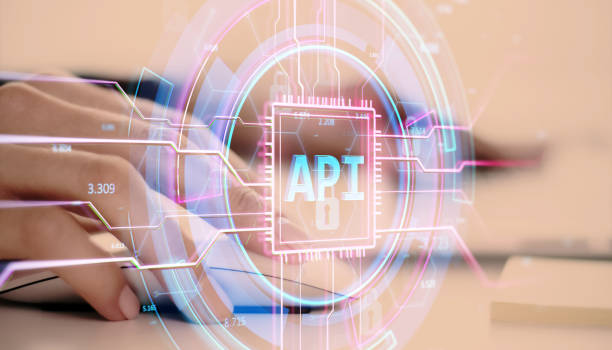
History and Key Developments of Artificial Intelligence
The history of #Artificial_Intelligence dates back to the 1950s, when scientists like Alan Turing and John McCarthy proposed initial ideas in this field.
Turing introduced the Turing Test, a criterion for measuring machine intelligence.
McCarthy also coined the term “Artificial Intelligence” and held a conference in Dartmouth, which is considered the official starting point of this field.
In the 1960s and 1970s, Artificial Intelligence saw advancements in areas such as problem-solving and natural language processing.
Programs like ELIZA and SHRDLU showed that machines could interact with humans to some extent.
However, these advancements faced limitations, and initial expectations for Artificial Intelligence were not met.
In the 1980s and 1990s, Artificial Intelligence regained attention with the emergence of expert systems and machine learning.
Expert systems were programs that stored the knowledge of specialists in a particular field and could act as consultants.
Machine learning, with algorithms like neural networks and genetic algorithms, allowed machines to learn from data and identify patterns.
[Artificial Intelligence and its applications](https://www.ibm.com/topics/artificial-intelligence)
In the 21st century, Artificial Intelligence has seen significant advancements in areas such as Deep Learning and Natural Language Processing.
Deep learning, using deep neural networks, has achieved excellent performance in image recognition, speech recognition, and language translation.
Natural language processing, using advanced algorithms, has enabled machines to understand and generate human language.
Today, Artificial Intelligence is transforming various industries and plays a vital role in our lives.
From virtual assistants like Siri and Alexa to self-driving cars and medical robots, Artificial Intelligence is changing the world.
Types of Artificial Intelligence and their Applications
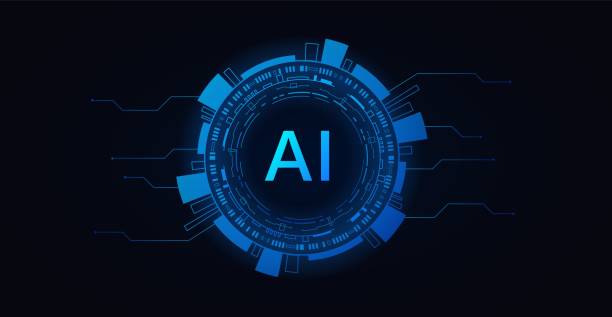
Types of Artificial Intelligence and their Applications
#Artificial_Intelligence can be divided into various types, including Narrow AI, General AI, and Super AI.
Narrow AI is limited to performing a specific task and cannot operate in other areas.
General AI is capable of performing any task a human can do.
Super AI surpasses human intelligence and can outperform humans in all fields.
Currently, most existing AI systems are of the Narrow AI type.
These systems perform very well in various fields such as image recognition, speech recognition, language translation, and computer games.
For example, image recognition systems can analyze images and identify objects within them.
Speech recognition systems can convert speech to text and execute voice commands.
Language translation systems can translate text from one language to another.
And computer game systems can compete with humans in various games.
General AI is still in the early stages of development, and there is a long way to go to reach this level of artificial intelligence.
Super AI is also a hypothetical concept, and no one knows yet whether it is possible or not.
The applications of Artificial Intelligence are vast and diverse.
#Artificial_Intelligence is used in various fields including medicine, finance, transportation, manufacturing, education, and entertainment.
In medicine, AI can help diagnose diseases, develop drugs, and provide healthcare.
In finance, AI can help predict the stock market, manage risk, and prevent fraud.
In transportation, AI can help develop self-driving cars, optimize routes, and reduce traffic.
In manufacturing, AI can help automate processes, improve product quality, and reduce costs.
In education, AI can help provide personalized education, assess students, and offer feedback.
And in entertainment, AI can help create computer games, produce movies and music, and provide interactive experiences.
| Type of Artificial Intelligence | Description | Examples |
|---|---|---|
| Narrow AI | Focused on performing a specific task | Siri, image recognition, chess games |
| General AI | Ability to perform any task a human can | Still under development |
| Super AI | Beyond human intelligence in all fields | Hypothetical concept |
Machine Learning and Deep Learning: Concepts and Differences

Machine Learning and Deep Learning: Concepts and Differences
Machine Learning (ML) is a subset of #Artificial_Intelligence that allows machines to learn from data without explicit programming.
In machine learning, the machine uses various algorithms to identify patterns in data and uses these patterns to predict or make decisions.
Deep Learning (DL) is a subset of machine learning that uses deep neural networks to learn from data.
Deep neural networks consist of multiple layers of nodes that are interconnected.
Each layer of the neural network extracts different features from the data, and these features are passed to subsequent layers.
By using deep neural networks, machines can identify more complex patterns in data and perform better on various tasks.
[Artificial Intelligence and its applications in industry](https://www.ibm.com/content/www/us/en/artificial-intelligence/what-is-artificial-intelligence.html)
The main difference between machine learning and deep learning lies in how they learn from data.
In traditional machine learning, engineers must manually extract important features from the data and provide them to the machine.
In deep learning, the machine can automatically extract important features from the data, without the need for manual intervention from engineers.
This makes deep learning more suitable for solving more complex and larger problems.
Machine learning and deep learning are used in various fields including image recognition, speech recognition, language translation, natural language processing, and computer games.
With continuous advancements in these fields, machine learning and deep learning are expected to play a more significant role in our lives.
Are you tired of your e-commerce website having visitors but no sales? Rasavab solves your main problem with professional e-commerce website design!
✅ Significant sales increase with targeted design
✅ Flawless user experience for your customers
⚡ Get a free consultation!
Challenges and Limitations of Artificial Intelligence
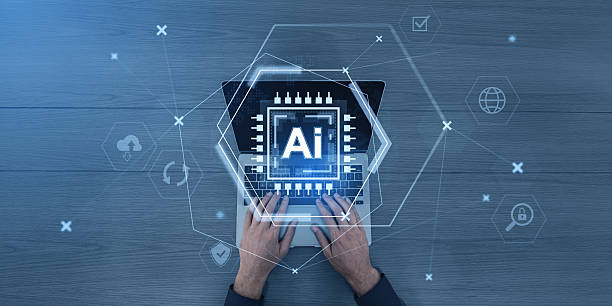
Challenges and Limitations of Artificial Intelligence
While #Artificial_Intelligence has enormous potential to improve our lives, it also faces challenges and limitations.
One of the most important challenges is the lack of training data.
To effectively train an AI system, a large volume of high-quality training data is needed.
Collecting and preparing this data can be time-consuming and expensive.
Another challenge is the interpretability of AI systems.
Many AI algorithms, especially deep neural networks, act like black boxes.
That is, we know what output these algorithms produce, but we don’t know how they arrived at that output.
This can be problematic, especially in fields like medicine and law, where we need to explain and justify decisions.
Ethical issues are also one of the important challenges of #Artificial_Intelligence.
The use of AI can lead to discrimination, privacy violations, and job displacement.
For example, facial recognition algorithms may not accurately identify individuals with darker skin tones.
AI systems may collect and use our personal information without our awareness.
And automated robots may replace human workers.
Furthermore, Artificial Intelligence still has weaknesses in understanding and reasoning like humans.
AI systems may perform very well on specific tasks, but they may not perform well in new and unexpected situations.
They also cannot think creatively or examine problems from different angles.
Despite these challenges and limitations, research in Artificial Intelligence is rapidly advancing, and many of these problems are expected to be solved in the near future.
The Future of Artificial Intelligence and its Impact on Our Lives
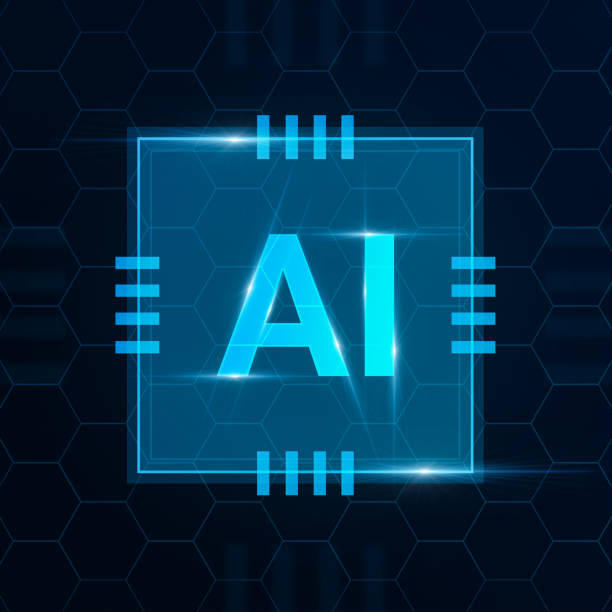
The Future of Artificial Intelligence and its Impact on Our Lives
#Artificial_Intelligence is already changing the world and is expected to play an even more significant role in our lives in the future.
With continuous advancements in this field, Artificial Intelligence can bring about dramatic transformations in various areas such as medicine, finance, transportation, manufacturing, education, and entertainment.
In medicine, Artificial Intelligence can help with early disease diagnosis, new drug development, and personalized healthcare.
For example, AI algorithms can analyze medical images and detect disease symptoms.
Surgical robots can perform complex operations with greater precision.
And AI systems can design drugs specifically tailored to each individual’s genetics.
In finance, Artificial Intelligence can help predict the stock market, manage risk, and prevent fraud.
For example, AI algorithms can analyze financial data and identify patterns that help predict market trends.
AI systems can identify suspicious transactions and prevent fraud.
And advisory robots can help individuals manage their investments.
In transportation, Artificial Intelligence can help develop self-driving cars, optimize routes, and reduce traffic.
Self-driving cars can reduce accidents and smooth traffic flow.
AI systems can determine the best routes for transporting goods and people.
And traffic management systems can automatically regulate traffic flow.
In manufacturing, Artificial Intelligence can help automate processes, improve product quality, and reduce costs.
Industrial robots can perform repetitive and dangerous tasks.
AI systems can continuously monitor product quality.
And supply chain management systems can automatically manage inventory.
In education, Artificial Intelligence can help provide personalized education, assess students, and offer feedback.
AI systems can identify each student’s learning style and provide educational content accordingly.
Automated assessment systems can grade assignments and tests and provide feedback to students.
And teacher robots can help students learn complex concepts.
However, the development of Artificial Intelligence also brings challenges.
Ethical issues related to the use of AI, concerns about job displacement, and potential risks from self-aware AI are among the issues that need attention.
Popular Tools for Artificial Intelligence Development
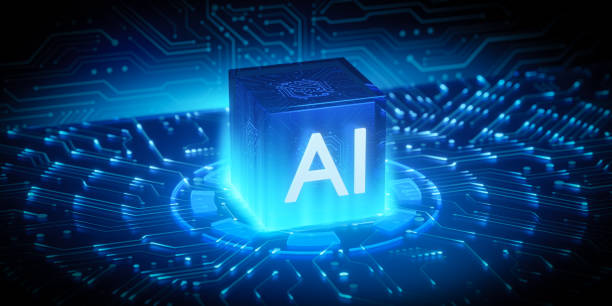
Popular Tools for Artificial Intelligence Development
The development of #Artificial_Intelligence requires the use of various tools and libraries that help developers implement and train intelligent algorithms.
In this section, we will discuss some of the most popular tools used in Artificial Intelligence development:
- TensorFlow is an open-source library developed by Google and used for machine learning and deep learning.
TensorFlow offers high flexibility and can be used to develop various AI models, including neural networks.
[TensorFlow](https://www.tensorflow.org/) - Keras is an Application Programming Interface (API) that runs on TensorFlow, Theano, and Microsoft Cognitive Toolkit.
Keras helps developers quickly and easily create and train deep learning models. - PyTorch is an open-source library developed by Facebook and used for machine learning and deep learning.
PyTorch is very popular among researchers and developers due to its flexibility and ease of use.
[PyTorch](https://pytorch.org/) - Scikit-learn is a Python library that includes various machine learning algorithms, including regression, classification, clustering, and dimensionality reduction.
Scikit-learn is a powerful tool for data analysis and building predictive models. - OpenCV is an open-source library used for image processing and computer vision.
OpenCV includes various algorithms for face detection, object detection, motion tracking, and 3D reconstruction. - NLTK is a Python library used for natural language processing.
NLTK includes tools for tokenization, stemming, grammatical parsing, and semantic analysis of text.
In addition to these tools, cloud platforms such as Amazon SageMaker, Google Cloud AI Platform, and Microsoft Azure Machine Learning also provide various features for developing and deploying #Artificial_Intelligence models.
Ethical Concepts in Artificial Intelligence

Ethical Concepts in Artificial Intelligence
The development and use of #Artificial_Intelligence are accompanied by numerous ethical issues that require careful attention and consideration.
One of the most important of these issues is discrimination.
Artificial Intelligence algorithms may make discriminatory decisions based on biased training data.
For example, a hiring algorithm might inadvertently prefer men over women, or a credit scoring algorithm might prefer individuals with lighter skin tones over those with darker skin tones.
Another issue is privacy.
AI systems may collect and use our personal information without our awareness.
This information can include details about our health, financial status, shopping habits, and location.
The use of this information can lead to privacy violations and misuse of personal data.
Another issue is accountability.
If an Artificial Intelligence system makes a mistake and causes damage, who is responsible? Is it the developer, the user, or the AI system itself? This issue requires careful consideration and definition of accountability for the decisions made by AI systems.
Another issue is job displacement.
With the advancement of #Artificial_Intelligence, many jobs may be replaced by robots and automated systems.
This can lead to increased unemployment and economic inequality.
To address this issue, there is a need for retraining the workforce and creating new job opportunities in AI-related fields.
| Ethical Issue | Description | Solutions |
|---|---|---|
| Discrimination | Discriminatory decisions based on biased data | Collecting diverse data and removing biases from algorithms |
| Privacy | Collecting and using personal information without consent | Transparency in data collection and adherence to privacy laws |
| Accountability | Defining responsibility for AI system errors | Establishing rules and regulations related to AI accountability |
| Job Displacement | Replacement of jobs by robots and automated systems | Retraining the workforce and creating new job opportunities |
To address these ethical issues, there is a need to establish laws and regulations, develop ethical standards, and educate the public about Artificial Intelligence.
Additionally, developers, researchers, and policymakers must work together to find solutions for the responsible and ethical use of #Artificial_Intelligence.
Are you tired of your e-commerce website not generating as much revenue as its potential? Rasavab, specializing in professional e-commerce website design, solves this problem forever!
✅ Increased sales rate and revenue
✅ High loading speed and unparalleled user experience
⚡ Get a free e-commerce website design consultation
Artificial Intelligence in Iran: Current Status and Outlook
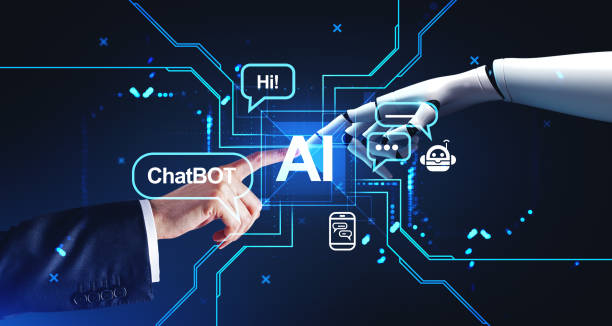
Artificial Intelligence in Iran: Current Status and Outlook
#Artificial_Intelligence has also been recognized as an important and strategic field in Iran.
In recent years, many efforts have been made to develop this field in Iran, including establishing research centers, holding conferences and workshops, and supporting knowledge-based companies active in Artificial Intelligence.
[Artificial Intelligence and National Development](https://irannlp.ir/blog/%D9%87%D9%88%D8%B4-%D9%85%D8%B5%D9%86%D9%88%D8%B9%DB%8C-%D9%88-%D8%AA%D9%88%D8%B3%D8%B9%D9%87-%D9%85%D9%84%DB%8C-%D8%A7%DB%8C%D8%B1%D8%A7%D9%86/)
Currently, Iran is active in various areas of Artificial Intelligence, including natural language processing, computer vision, machine learning, and robotics.
Some Iranian knowledge-based companies have been able to offer AI-based products and services to the market, including facial recognition systems, speech processing systems, and data analysis systems.
However, the development of Artificial Intelligence in Iran also faces challenges.
One of the most important challenges is the shortage of skilled personnel in this field.
To overcome this problem, investment in education and training of specialized workforce in Artificial Intelligence is needed.
Another challenge is the lack of necessary infrastructure for Artificial Intelligence development.
For example, there is a need for access to big data and high processing power.
Another challenge is the limitations caused by international sanctions.
Sanctions have limited access to advanced technologies and AI development tools.
Despite these challenges, the outlook for Artificial Intelligence in Iran is bright.
Given the country’s high potential in human resources and natural resources, Iran can become one of the leading countries in Artificial Intelligence in the future.
To achieve this, careful planning, appropriate investment, and cooperation among the government, universities, and private companies are required.
How to Learn Artificial Intelligence

How to Learn Artificial Intelligence
Learning #Artificial_Intelligence can be an exciting and rewarding journey.
Here are some tips to start this journey:
- Learn the basic concepts: First and foremost, you need to become familiar with the basic concepts of Artificial Intelligence, machine learning, and deep learning.
Many online resources and training courses are available for this purpose. - Learn programming: Programming is an essential skill for developing Artificial Intelligence.
Python and R are among the most popular programming languages for AI development. - Use existing libraries and tools: Many libraries and tools are available for Artificial Intelligence development that make work easier for developers.
TensorFlow, Keras, PyTorch, and Scikit-learn are among the most popular of these libraries. - Do practical projects: The best way to learn Artificial Intelligence is by doing practical projects.
Try to choose projects that you are interested in and that are challenging. - Be active in online communities: There are many online communities for Artificial Intelligence enthusiasts.
In these communities, you can ask your questions, share your experiences, and learn from others. - Stay updated: Artificial Intelligence is a rapidly evolving field.
To stay informed about the latest advancements, you should continuously read new articles and research.
Many educational resources are available for learning Artificial Intelligence, including:
- Online courses: Coursera, edX, and Udacity offer many online courses in Artificial Intelligence.
- Books: Many books on Artificial Intelligence are available that you can use to learn basic and advanced concepts.
- Scientific articles: Many scientific articles are published in Artificial Intelligence that you can use to learn about the latest advancements.
- Blogs and websites: Many blogs and websites on Artificial Intelligence are available that you can use to learn practical tips and tricks.
With effort and perseverance, you can learn #Artificial_Intelligence and succeed in this field.
Frequently Asked Questions
| Question | Answer |
|---|---|
| What is the definition of Artificial Intelligence (AI)? | It is a field in computer science that aims to create intelligent machines capable of thinking, learning, problem-solving, and decision-making like humans. |
| Mention some common applications of Artificial Intelligence. | These include self-driving cars, voice assistants (like Siri and Alexa), recommendation systems (like Netflix and Amazon), facial recognition, and medical diagnosis. |
| What is the difference between Narrow AI (ANI) and General AI (AGI)? | Narrow AI specializes in one specific task, while General AI possesses human-like intellectual ability to perform any cognitive task. |
| What is Machine Learning and its relationship with Artificial Intelligence? | Machine Learning is a branch of Artificial Intelligence that focuses on developing algorithms that allow systems to learn from data without explicit programming. |
| What are Artificial Neural Networks? | They are computational models inspired by the structure and function of the human brain, used in deep learning to process data and discover complex patterns. |
| Mention some ethical challenges related to Artificial Intelligence. | These include privacy issues, bias in data and algorithms, job loss, and accountability in case of errors or unfair decisions. |
| What is Natural Language Processing (NLP)? | It is a branch of Artificial Intelligence that focuses on enabling computers to understand, interpret, and generate human language in a useful and interactive way. |
| How can Artificial Intelligence affect the job market? | It can lead to the automation of some routine tasks, requiring worker retraining and creating new jobs in areas of designing, developing, and maintaining AI systems. |
| What is Computer Vision? | It is a field in Artificial Intelligence that enables computers to ‘see’, understand, and interpret images and videos in the same way humans do, allowing them to recognize objects and faces. |
| What is the importance of data in developing Artificial Intelligence systems? | Data is the fuel that powers AI systems, especially in machine learning. The quality and quantity of data significantly affect the accuracy and performance of models and their ability to learn and make correct decisions. |
And other advertising services of Rasavab advertising agency
- Smart SEO: An innovative service to enhance digital branding through user experience customization.
- Smart SEO: An effective tool for digital branding by designing an attractive user interface.
- Smart Google Ads: A dedicated service for increasing website traffic based on real data usage.
- Smart Advertising Campaign: An innovative service for increasing website traffic through Google Ads management.
- Smart Data Analysis: A combination of creativity and technology to boost sales by utilizing real data.
And over hundreds of other services in internet advertising, advertising consultation, and organizational solutions
Internet Advertising | Advertising Strategy | Advertorial
Sources
- What is Artificial Intelligence? A Complete Guide
- Applications of Artificial Intelligence in Everyday Life
- The Future of Artificial Intelligence: Challenges and Opportunities
- Ethical Issues in the Development and Use of Artificial Intelligence
? To reach the pinnacles of success in the online world, Rasavab Digital Marketing Agency is the smart companion for your business. With our expertise, SEO-optimized website design is no longer a dream, but a high-yield reality.
📍 Tehran, Mirdamad Street, next to Bank Markazi, Kazeroun Jonoubi Alley, Ramin Alley, No. 6




